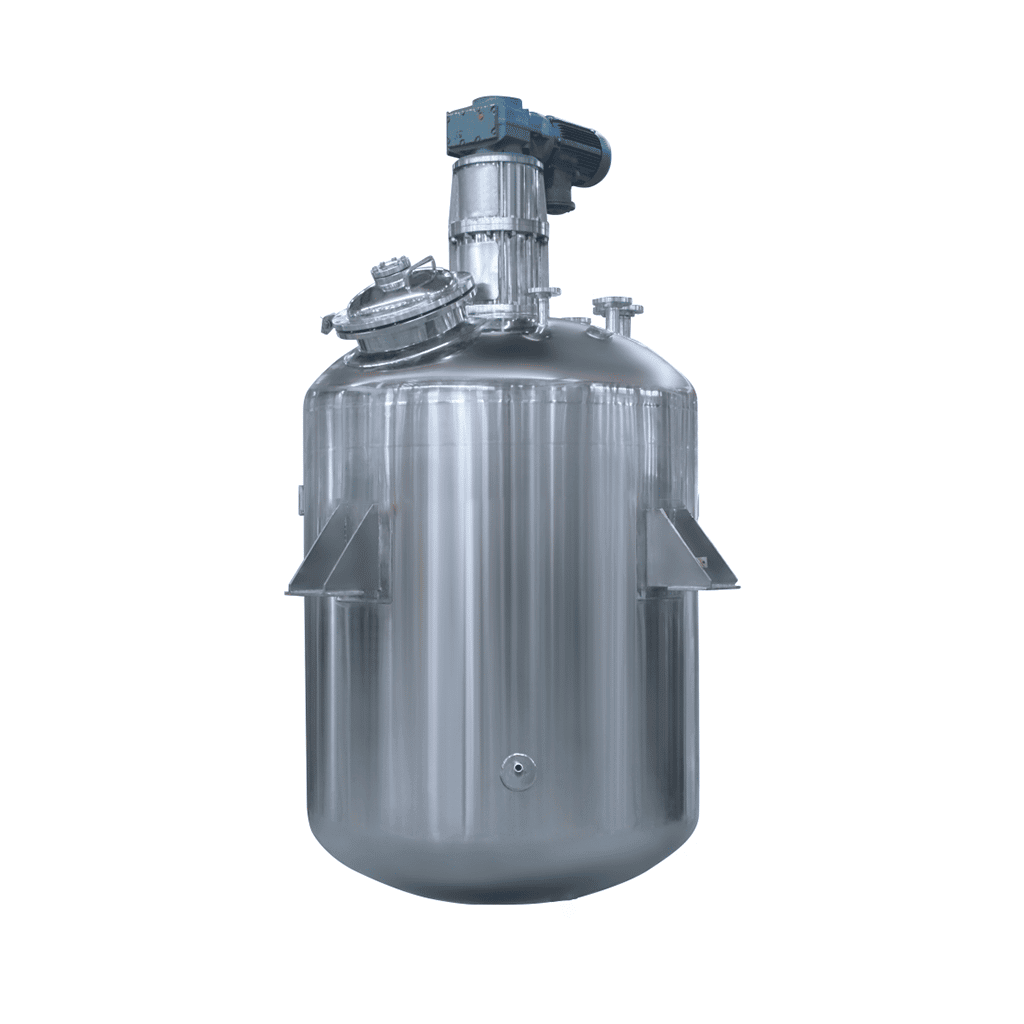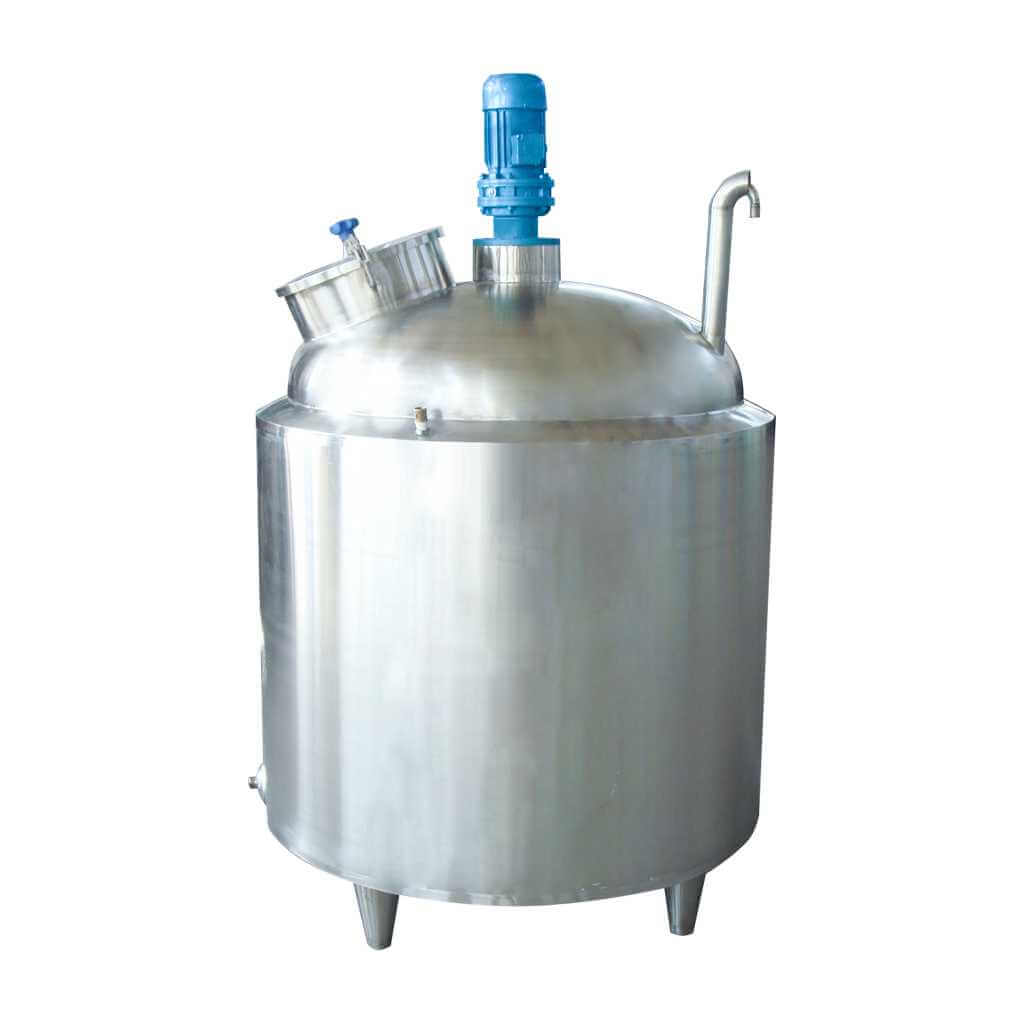
-24-1.jpg)
Stainless Steel Reactor
Stainless Steel Reactor: used in dairy products, sugar, beverages, and other fields
Material
stainless steel (316, 304)
Capacity (L)
10-10000+
Mixing system
anchor, paddle, frame and others
Heating system
electric heating, oil heating and others
A stainless steel reactor is a stainless steel container equipment. The stainless steel reactor consists of a kettle body, a kettle lid, a stirrer, a jacket, a bracket, a transmission device, a shaft seal device, etc. Materials and openings can be made according to user needs and process requirements. Stainless steel reactors are mainly used for stirring, homogenizing, and mixing storage of dairy products, sugar, beverages, food, and various pharmaceuticals.
Request a quoteChemical reactors are suitable for various reaction conditions and can be used for chemical reactions of various materials under high temperatures and high pressure. For the mutual reaction between several raw materials and the purification of raw materials, chemical reactors can provide the environment, temperature, pressure, etc. required for the reaction. The broad understanding of a chemical reactor is a container for physical or chemical reactions. Through the structural design and parameter configuration of the container, the heating, evaporative cooling, and low-speed mixing functions required by the process are realized.

Conditions for using chemical reactors
It is a more practical method to judge the pulp type suitable for the process based on the purpose of the mixing process and the flow state caused by the agitator. Chemical reactors are widely used in petroleum, chemicals, rubber, pesticides, dyes, medicine, and food. Pressure vessels are used to complete vulcanization, nitration, hydrogenation, hydrocarbonization, polymerization, condensation, and other processes. The materials generally include carbon steel, stainless steel, diamond, nickel-based (Hastelloy, Monel, Inconel) alloys, and other composite materials.
Chemical reactor usage characteristics
The broad understanding of chemical reactor is a stainless steel container with physical or chemical reactions. The structural design and parameter configuration of the container according to the requirements of different process conditions. The design conditions, process, inspection, manufacturing, and acceptance must be based on relevant technical standards to achieve the heating, evaporation, cooling, and low-speed mixing reaction functions required by the process. Pressure vessels must comply with GB150 (standard for steel pressure vessels, and atmospheric pressure vessels must comply with NB/T47003.1-2009 standards for steel welded atmospheric pressure vessels). Subsequently, the pressure requirements during the reaction process also impose different requirements on the design of the vessel. Production must strictly follow the corresponding standards for processing, testing, and trial operation. Chemical reactors vary according to different production processes, operating conditions, etc. The design structures and parameters of chemical reactors are different, that is, the structural styles of chemical reactors are different, and they are non-standard container equipment.
The chemical reactor kettle is a comprehensive reaction vessel. The structure, function, and configuration accessories of the chemical reactor kettle are designed according to the reaction conditions. From the initial feeding to the reaction to discharging, the preset reaction steps can be completed with a high degree of automation. Strictly regulate important parameters such as temperature, pressure, mechanical control (stirring, air blast, etc.), reactant/product concentration, etc. during the reaction process.
Chemical reactor materials generally include carbon-manganese steel, stainless steel, aluminum, base (Hastelloy, Monel) alloy, and other composite materials. Chemical reactors can be made of stainless steel materials such as SUS304.SUS316L. Agitators for chemical reactors include anchor type, frame type, prize type, turbine type, scraper type, and combined type. The rotating mechanism can use a cycloidal pinwheel reducer, continuously variable speed reducer variable frequency speed regulation, etc., which can meet the special reaction requirements of various materials. The sealing device of the chemical reactor kettle can adopt sealing structures such as mechanical seals and packing seals. Heating and cooling can adopt structures such as jackets, half pipes, coils, and Miller plates. Heating methods include steam, electric heating, and thermal oil. To meet the process needs of different working environments such as acid resistance, high-temperature resistance, wear resistance, and corrosion resistance. It can be designed and manufactured according to the user’s process requirements.
Precautions for using chemical reactor
Chemical reactors used in large quantities in the chemical industry will always be damaged in one way or another due to the corrosiveness of the medium, hot and cold reaction conditions, transportation, use, human factors, etc., causing unnecessary production stops. There is no need to replace the entire device when there is minor damage, which requires the use of appropriate repair methods. Otherwise, the chemical reactor kettle will be corroded by the solvent in the kettle, resulting in rapid expansion of damage, and resulting in unpredictable losses such as production shutdown, safety accidents, and environmental pollution.
A chemical reactor is broadly understood and can be interpreted as a stainless steel container with physical or chemical reactions. The structural design and parameter configuration of the container are carried out according to the requirements of different process conditions. Design conditions, processes, inspection, manufacturing, and acceptance must be based on relevant technical standards to achieve the heating, evaporation, cooling, and low-speed mixing reaction functions required by the process. Products must be processed strictly in accordance with corresponding standards. Chemical reactors vary according to production processes and operating conditions.




